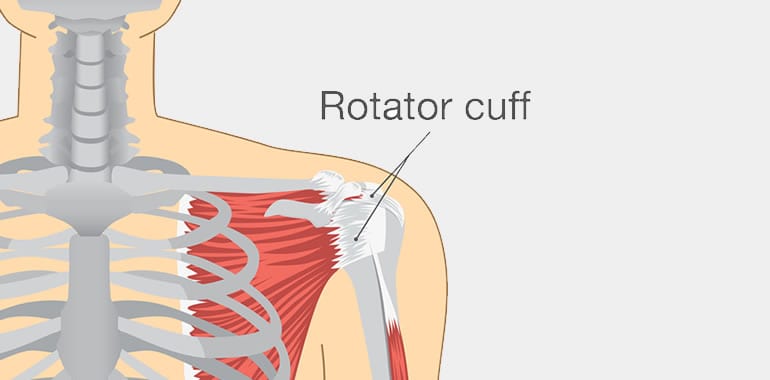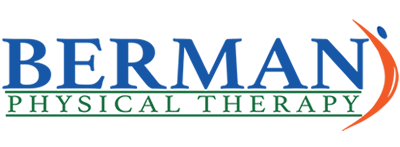
Since the pandemic hit, we’ve gotten more calls about shoulder pain, rotator cuff issues, and concerns about needing shoulder surgery than we’ve got in years! Seriously, pre-March 2020, the most common calls we got at our Naples physical therapy location was for back pain. I even went as far to say that 75% of what we treated was back pain.
BUT not no more! Yes I meant to say “not no more” because I wanted to get your attention! I wanted you to know that I, Dr. Jake Berman, am truly the one writing this information. And if you know me, then you know that’s the way I talk (I’m sure my wife and mother-in-law are cringing right now…).
Anyways, let's get back to the point. Why in the heck would we be getting exponentially more calls in the past 6-12 months about potential clients having shoulder pain, rotator cuff tears, and those being told that they need to have rotator cuff surgery? Is there something in the air? No pun intended… Is there something in the water? Is there something in our food causing this massive increase in shoulder pathology?
Before we can answer that question, let me first tell you what the number one most common cause of insidious shoulder pain and non-traumatic rotator cuff tears is. Insidious and non-traumatic means you didn’t slip and fall or have any kind of accident that caused your pain and/or rotator cuff tear. I’m strictly talking about shoulder pain that “just came out of nowhere.” Or pain that started after doing something “that wasn’t a big deal at all.” For example, “I just reached into the back seat of the car.” Or “I went to catch a falling coffee mug.” Or one of the most common “I didn’t do anything, it just started hurting.”
The number one cause of all of those examples that I just gave is….drum roll please.... POSTURE! More specifically, poor posture!
Now I know what some of you with shoulder pain might be thinking- “I don’t think my posture is that bad.” Well it might not be BUT it might be just bad enough that it places more stresses on the rotator cuff that should be in the “efficient state.”
And I’m sure there are others reading this who just had a light bulb go on above their head, thinking “I knew my posture has been getting worse, but I didn’t know that it could be causing my shoulder pain.”
Well it’s true, the number one cause of insidious non-traumatic shoulder pain is poor/bad posture. But before we can start to improve our posture, we must first understand what causes bad posture to begin with. Have any guesses on what causes bad posture?
The most common answer I get is “age, posture just gets worse with age.” The second most common answer is “I’ve always had bad posture, I was born with it.” And way back in third place I finally get the answer of “sitting. I sit all day long at work.”
WRONG!
All three of those answers can be considered catalysis for causing bad posture but none of them are the actual cause of bad posture. The one and only one true cause of bad posture in 99% of Americans is WEAKNESS! Yes that’s right, weakness is the number one cause of bad posture! And it's a weakness of some very specific muscles that very few people even know exist so you wont find any equipment at the gym that works this specific muscle group.
To be explicitly clear, the number one cause of bad posture which is the number one cause of non-traumatic shoulder pain is… weakness of your thoracic paraspinals! Your thoracic paraspinal muscles are the number one muscle group responsible for “good” upper body posture. Those are the muscles that you are supposed to use to lift your chest upwards. This is usually contrary to what most people think. Most people think that improving their posture is as simple as pulling their shoulder blades downward. In reality, good posture requires very little if any effort at all from your shoulder blades. I’ll explain more but first...
What the heck is a thoracic paraspinal muscle anyways???
Paraspinal muscles are tubular in shape and run from the base of the back of your head parallel with your spine all the way down to your pelvis. They are named for the area of the spine that they are covering. Meaning you have cervical paraspinals (your neck), thoracic paraspinals (your mid to upper back) and lumbar paraspinals (your low back area). The main purpose of these muscles is to extend your spine. Think of looking up towards the sky (cervical), bending backwards (lumbar), or more importantly think of lifting your chest up (thoracic). The muscles responsible for that motion are your paraspinals.
Now that you have all that extremely valuable information, let's try to bring it ‘back’ (no pun intended) full circle. I’m sure we’ve all heard the saying “if you don’t use it, you lose it.” Well that saying is 100% true regarding muscle strength. If you don’t use your muscle strength, your body will literally break down the “excess” muscle mass so that you don’t waste valuable energy maintaining that unused muscle.
The reason why that last paragraph is important is because when sitting in a chair, comfortably relaxed, you don’t need to use your thoracic paraspinal muscles to keep you erect anymore because you now have the chair back rest to support you. And what happens to your strength if you don’t utilize it? YES, you lose it. So now you should be able to see how sitting can lead to weakness, specifically weakness of your thoracic paraspinal muscles.
Hopefully you’re beginning to ask what all this has to do with shoulder pain…
Well this has everything to do with shoulder pain. You see, the shoulder has a lot of moving parts literally and figuratively. The shoulder blade itself has at least 17 muscles that attach to it depending on anatomical variation which is what gives your shoulders the ability to have the most range of motion of any joint in your entire body. HOWEVER this also means that there is a lot of room for error…
In an attempt to avoid going too far into the woods and losing you completely, I’m going to try and keep this as simple as possible. 4 of the 17 muscles that attach to your shoulder blade make up your rotator cuff. The names of those 4 muscles are not as important as the role that they play in giving you the ability to move your arm. Those 4 rotator cuff muscles’ main job is to keep your arm bone in perfect positioning where it attaches to your body to avoid shoulder impingement. Shoulder impingement occurs when your arm bone pinches muscle against your shoulder blade (bone). The number one way this occurs is when the shoulder blade is tilted forward because it follows the position of your thoracic spine. When the shoulder blade is tilted forwards, there is now less total motion between your arm bone and your shoulder blade when you raise your arm forward overhead which increases the likelihood of pinching rotator cuff muscles.
One thing (arguably the most important thing) that you need to know about the rotator cuff muscles is that they are TINY! Seriously, they are super small and weak compared to other muscles in your shoulder and exponentially smaller and weaker compared to other muscles in your body. So when you chronically pinch one of those small muscles between two bones (arm bone and shoulder blade bone), it’s eventually going to break down and ultimately tear. And that my friends, is HOW the majority of non-traumatic rotator cuff tears occur.
But what does any of that have to do with weakness of your thoracic paraspinal muscles??? EVERYTHING! Literally it has everything to do with your thoracic paraspinal muscle weakness. Reason being, when the thoracic paraspinal muscles are strong they are able to extend your upper back backwards which in turn leads to your shoulder blade sitting in a more neutral position (opposed to tilted forward). When your shoulder blade is sitting in a neutral position, the muscles that attach to your shoulder blade can work more efficiently which results in proper movement at your shoulder joint. Proper movement of your arm bone where it attaches to your shoulder blade (socket) results in a significant reduction in the chances your rotator cuff muscles will be pinched. No muscle pinching means that you are now dramatically less vulnerable to non-traumatic rotator cuff tears!
HOORAY!
Simple right? Simple yes, but easy? Absolutely not! And that’s where we come in. At Berman Physical Therapy we’ve actually developed a Better Posture Program that has proven to increase thoracic paraspinal muscle strength resulting in improved overall upper body posture, decreased shoulder and neck pain, and even helped many people avoid rotator cuff surgery all together! That’s right, read that last sentence one more time.
Hopefully you’re asking how anybody could avoid having surgery if “the MRI showed the rotator cuff is torn.” Well that’s why y’all pay me the big buck! Because this is our speciality and even our mission statement: “To help as many people as possible avoid needless surgeries while maintaining a high quality of life.” Over the years we’ve developed objective tests that can be done in minutes that have a 95% success rate of predicting if you truly need surgery OR if you can strengthen the other 16 muscles in the shoulder to help take the stress off the torn one so that it can attempt to heal on its own.
Exciting, right?!?!
Now that we’ve got even more information, let's bring this thing full circle one more time. At the beginning of this I said that we’ve seen a significant increase in the amount of calls over the past 6-12 months for shoulder pain, rotator cuff tears, and people trying to avoid surgery. Are you able to see why that number has skyrocketed in the past year? Think about what the majority of people in America and even worldwide have been doing more off since March 2020…
SITTING!!! The entire world has sat more in the past 18 months than ever in the history of mankind! Don’t hold me to that stat but I’m sure it’s true… And if you don’t know why excessive sitting leads to shoulder pain and rotator cuff tears- go back to the top and start all over again!
Immediately actionable tip:
One of the easiest ways to activate and strengthen your thoracic paraspinal muscles is to use what I’ve coined as the “2 finger drill.” It’s very simple and can be done while sitting or in a standing position. Simply take one finger from your right hand and put it in your belly button and one finger from your left hand and put it on your chest bone (sternum). Now using your stomach muscles, pull your belly button in towards your spine. Hold it there AND maintain breathing. While holding that position, attempt to lift your chest bone up towards the ceiling. There shouldn’t be much motion however the higher your chest goes the more I want you to pull in your belly button.
Maintaining your belly button inward while lifting your chest bone will make it significantly more likely that you are attaining that motion by activating your thoracic paraspinals. You should start to feel muscles wake up in the middle of the middle of your back (between your shoulder blades). Once you can feel those muscles working, then you can work on endurance. Try to hold that position for 30-60 seconds. When done correctly you should really be feeling those muscles after a full minute of holding this position! Once you find those muscles, try to activate them as many times throughout the day as possible and that will help you start to break the habit of living in bad posture! But more importantly, this will decrease your risk for experiencing shoulder pain and ultimately avoiding rotator cuff surgery!


